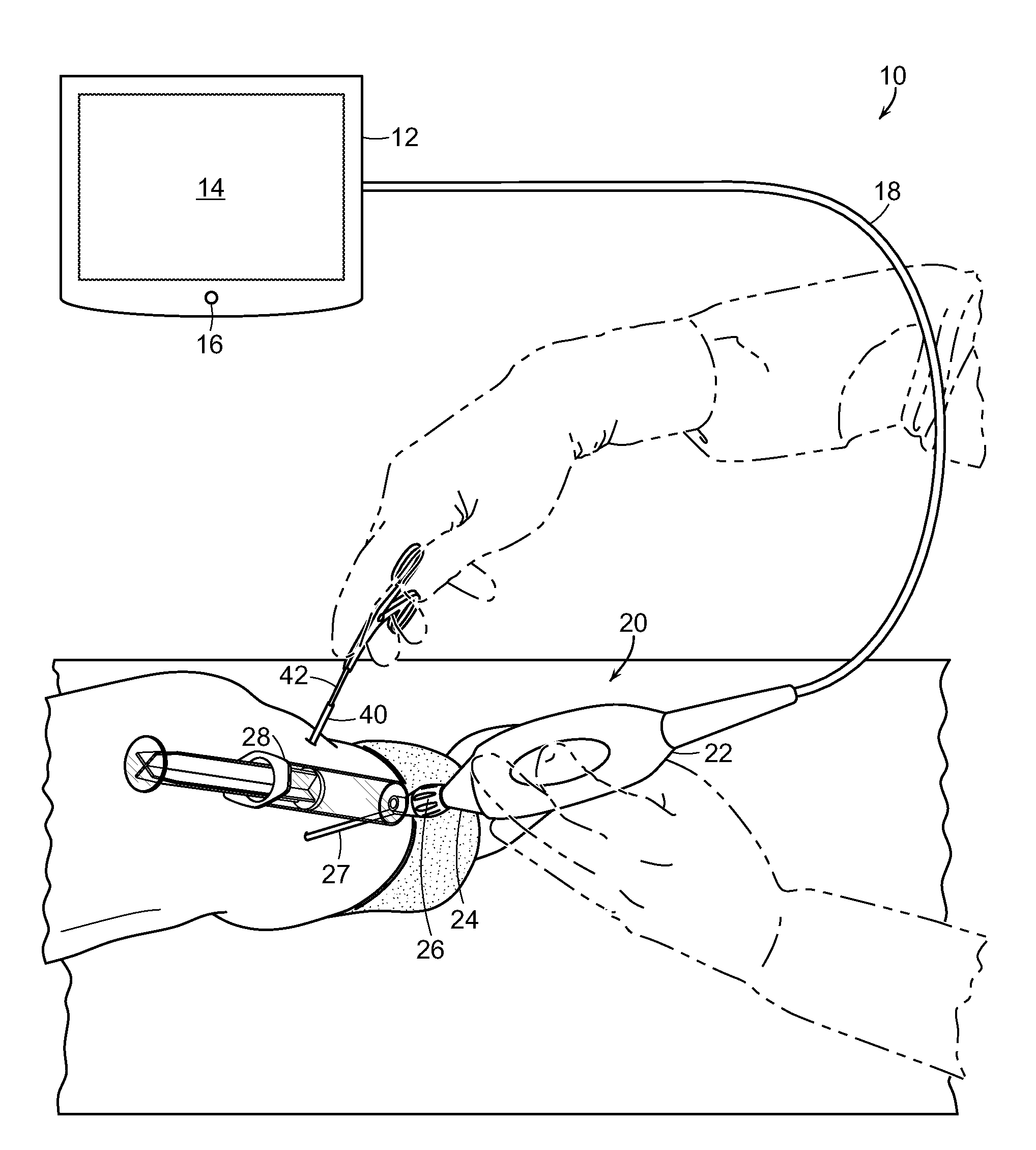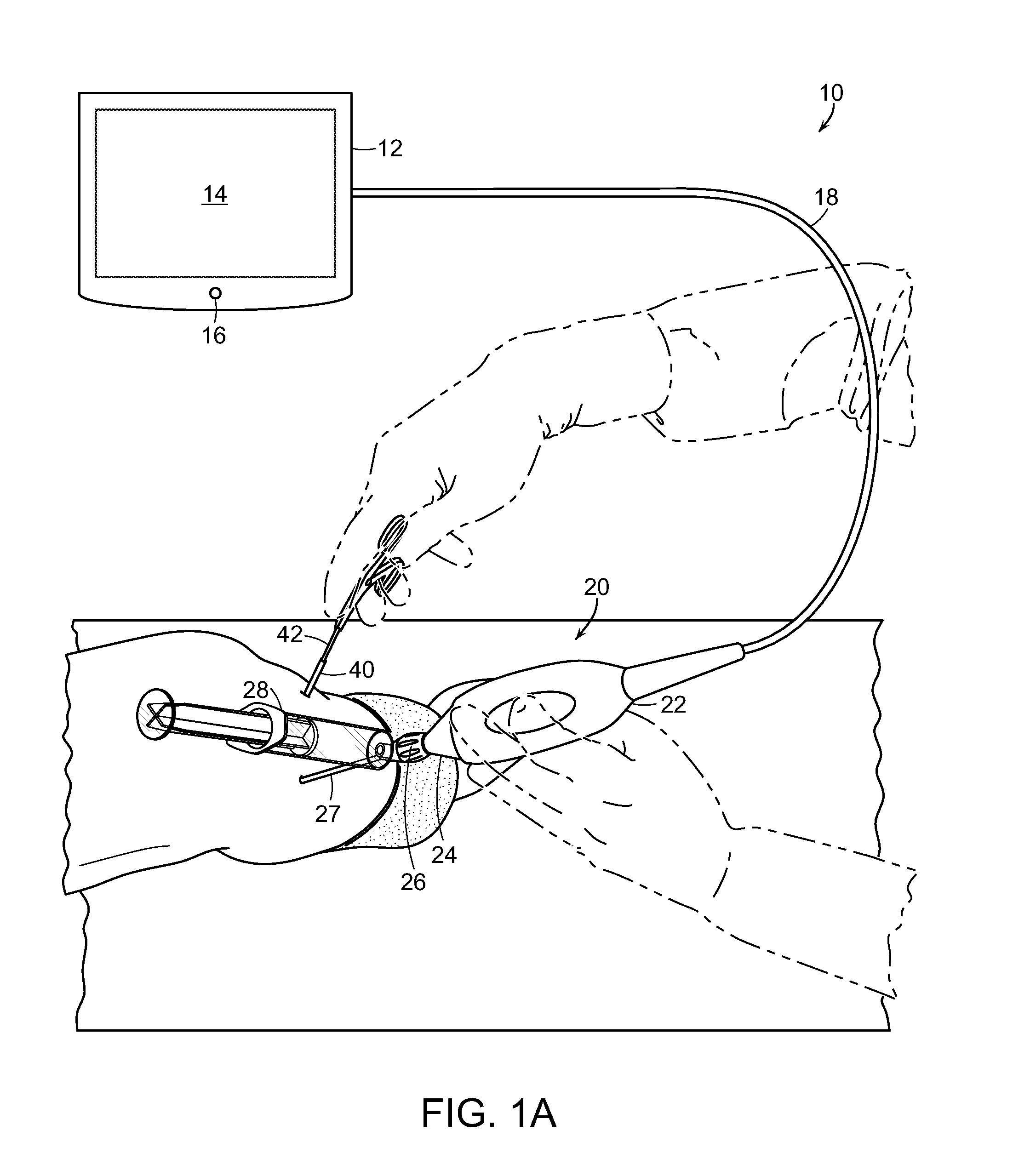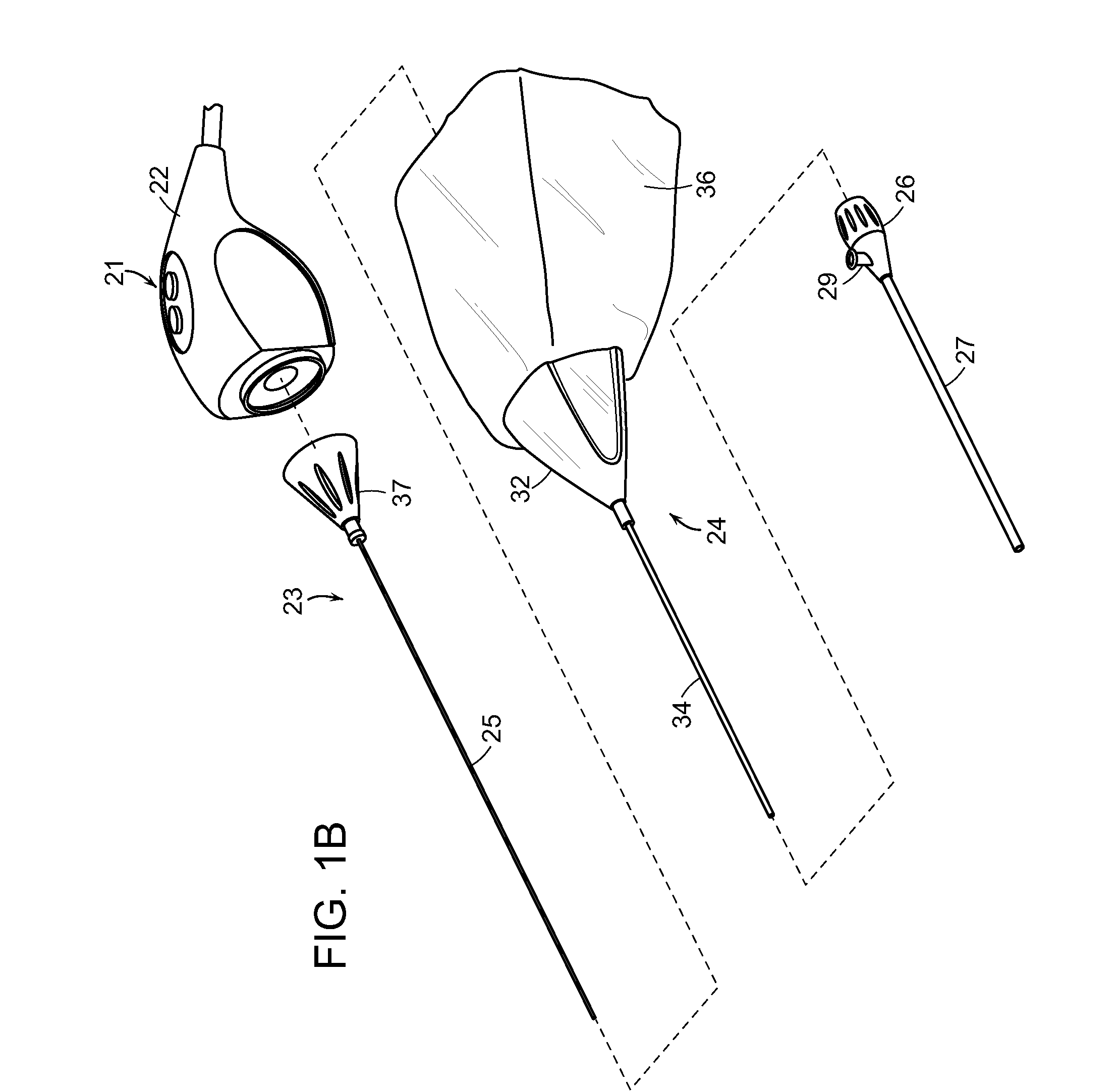Devices and methods for minimally invasive arthroscopic surgery
a minimally invasive arthroscopic and surgical technology, applied in the field of devices and methods for minimally invasive arthroscopic surgery, can solve the problems of acetabular labrum damage, pain if damaged, articular cartilage damage, etc., and achieve the effects of low cost, low number of components, and less cumbersomeness
- Summary
- Abstract
- Description
- Claims
- Application Information
AI Technical Summary
Benefits of technology
Problems solved by technology
Method used
Image
Examples
first embodiment
[0084]With reference now to FIG. 10A, the distal ends 1110 and 1210 of the imaging probe assembly 1100 and surgical tool assembly 1200 of FIG. 9 is depicted taken along section 10A-10A of FIG. 9. As depicted, the cannulas 27 and 40 are inserted up until the start of the curved access space 1320 between the femoral head 1302 and the acetabulum 1304 in the hip joint 1300. The sheath / endoscope 34 and the tool 42 extend / protrude from distal ends of the cannula 27 and 40 into the curved access space 1320 to reach the damaged region 1310 of the hip joint 1300. As depicted, the distal ends 1110 and 1210 of the imaging probe assembly 1100 and surgical tool assembly 1200 are shaped to substantially match the curved access space 1320. Thus, in the depicted embodiment, distal ends of the tool 42 and of the sheath / endoscope 23, 34 are curved to substantially match the curvature of the curved access space 1320.
second embodiment
[0085]With reference now to FIG. 10B, the distal ends 1110 and 1210 of the imaging probe assembly 1100 and surgical tool assembly 1200 of FIG. 9 is depicted taken along section 10B-10B of FIG. 9. Similar to the embodiment in FIG. 10A, the cannula 27 and 40 are depicted as inserted up until the start of the curved access space 1320 between the femoral head 1302 and the acetabulum 1304 in the hip joint 1300. Thus, the sheath / endoscope 34 and the tool 42 extend / protrude from distal ends of the cannula 27 and 40 into the curved access space 1320 to reach the damaged region 1310 of the hip joint 1300. As depicted, the distal ends 1110 and 1210 of the imaging probe assembly 1100 and surgical tool assembly 1200 are shaped to substantially match the curved access space 1320. Thus, in the depicted embodiment, distal ends of the tool 42 and of the sheath / endoscope 23, 34 are curved to substantially match the curvature of the curved access space 1320. In comparison with the embodiment of FIG. ...
third embodiment
[0086]With reference now to FIG. 10C, the distal ends 1110 and 1210 of the imaging probe assembly 1100 and surgical tool assembly 1200 of FIG. 9 is depicted taken along section 10C-10C of FIG. 9. In contrast with FIGS. 10A and 10B, the cannula 27 and 40 are depicted as inserted into the curved access space 1320 between the femoral head 1302 and the acetabulum 1304 in the hip joint 1300. Thus, the sheath / endoscope 34 and the tool 42 are substantially enclosed up to the damaged region 1310 of the hip joint 1300. As depicted, the distal ends 1110 and 1210 of the imaging probe assembly 1100 and surgical tool assembly 1200 are shaped to substantially match the curved access space 1320. Thus, in the depicted embodiment, distal ends of the cannula 27 and 40 are curved to substantially match the curvature of the curved access space 1320. Again, it will be appreciated by one of ordinary skill in the art that various geometric configurations may be utilized for accessing the curved access spa...
PUM
 Login to View More
Login to View More Abstract
Description
Claims
Application Information
 Login to View More
Login to View More - R&D
- Intellectual Property
- Life Sciences
- Materials
- Tech Scout
- Unparalleled Data Quality
- Higher Quality Content
- 60% Fewer Hallucinations
Browse by: Latest US Patents, China's latest patents, Technical Efficacy Thesaurus, Application Domain, Technology Topic, Popular Technical Reports.
© 2025 PatSnap. All rights reserved.Legal|Privacy policy|Modern Slavery Act Transparency Statement|Sitemap|About US| Contact US: help@patsnap.com



